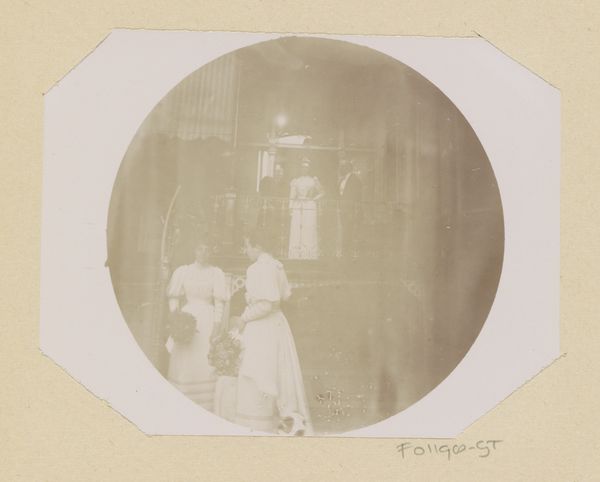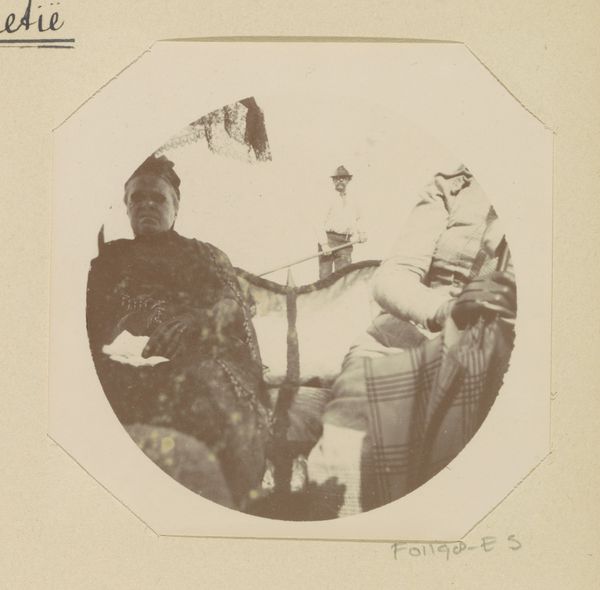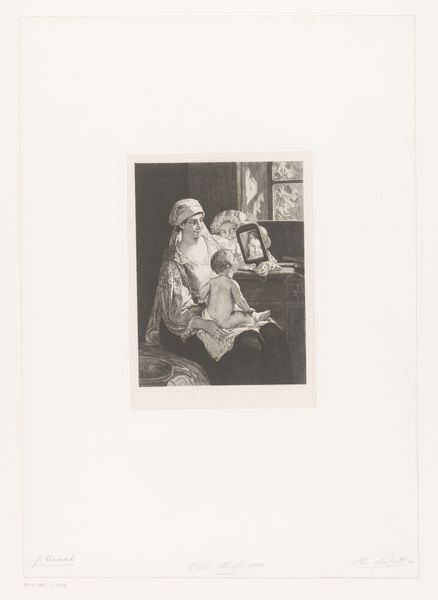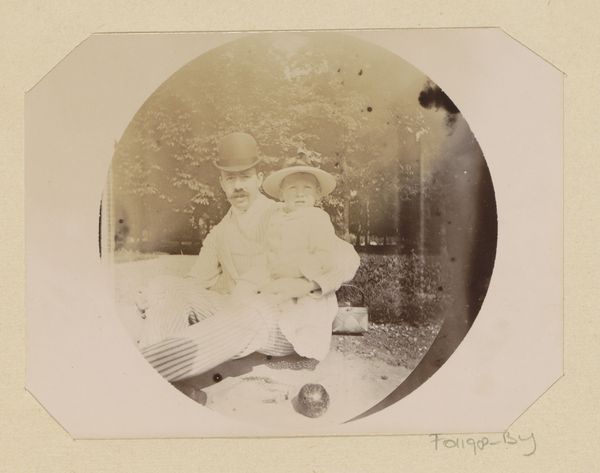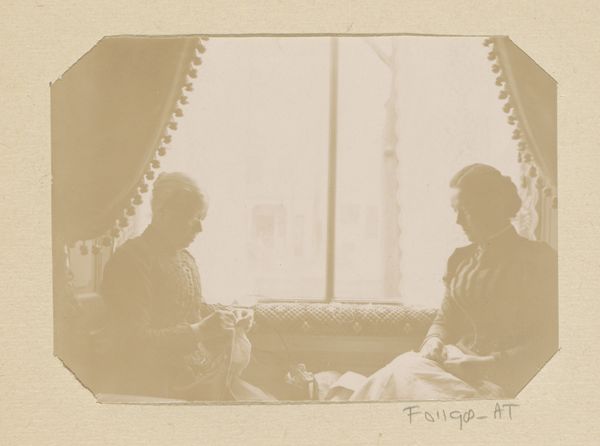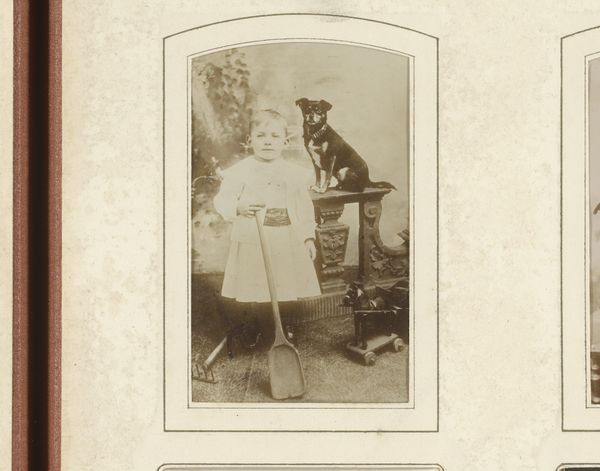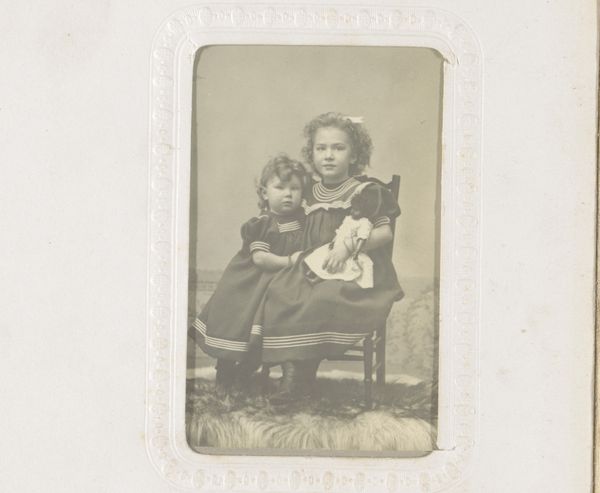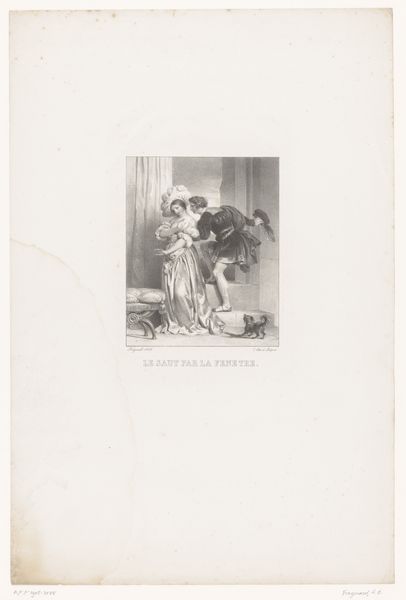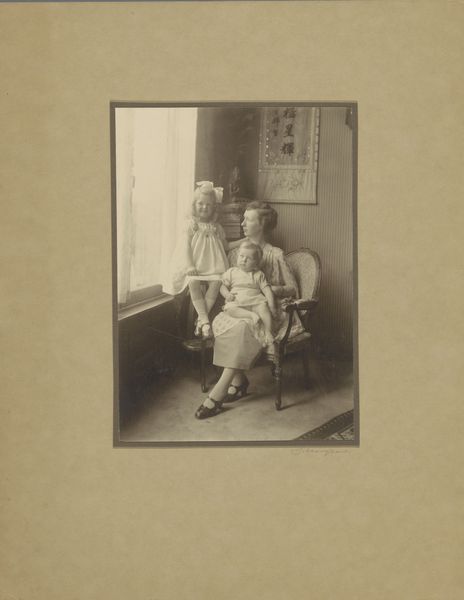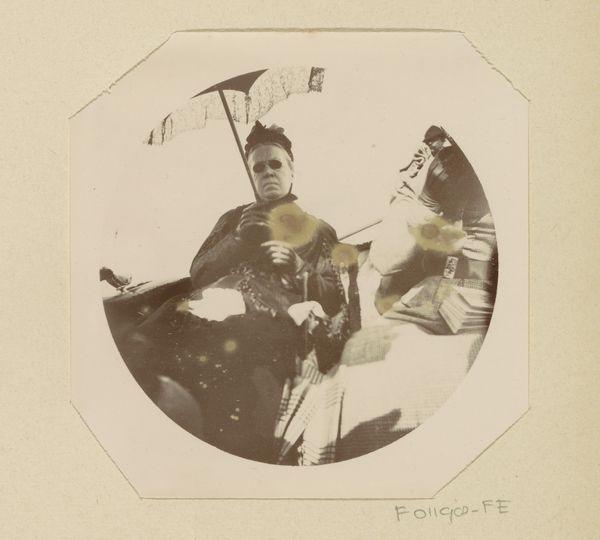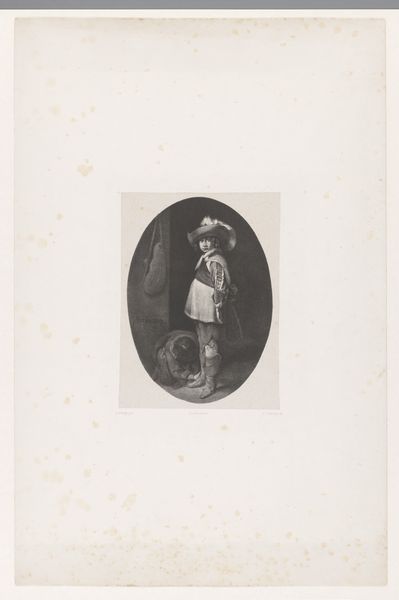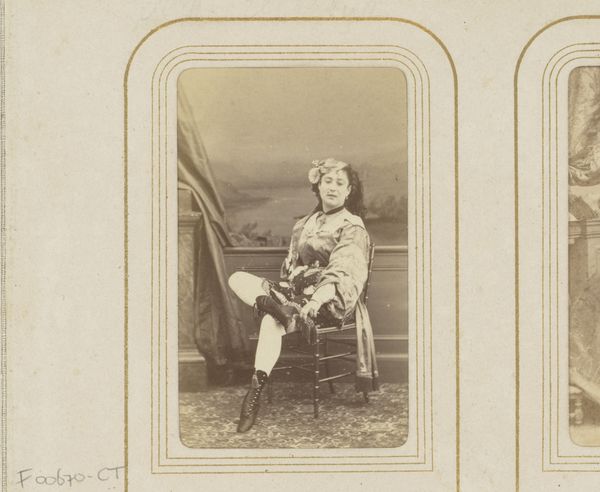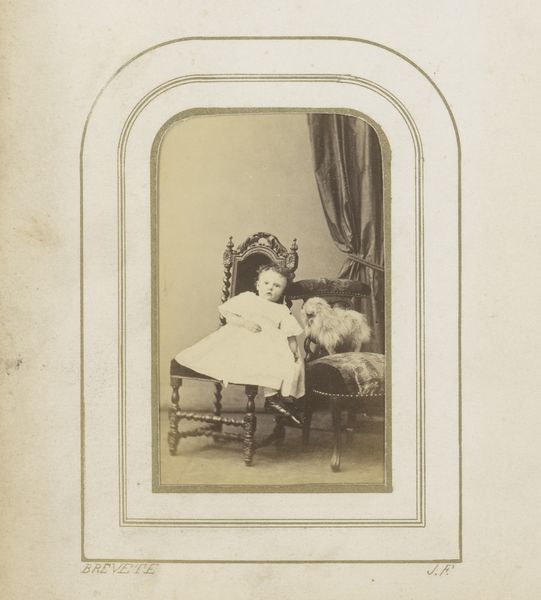
Lucia Wilhelmina Piek-Jolles naast een onbekende vrouw met een boek in een gondel in Venetië, achterin de gondelier 1889 - 1893
0:00
0:00
Dimensions: height 100 mm, width 100 mm
Copyright: Rijks Museum: Open Domain
Editor: This photograph, taken sometime between 1889 and 1893, shows Lucia Wilhelmina Piek-Jolles and another woman in a Venetian gondola. There's such a strong sense of quiet observation, almost staged. What’s your perspective on this, especially regarding its place in photographic history? Curator: The staged feeling is key, and that's precisely where we see the intersection of photography and social performance in the late 19th century. This wasn’t simply about capturing reality. It was about constructing a particular image for public consumption. Think about the rising middle class, newly able to travel and wanting to document their experiences in ways that reflected their social aspirations. Venice, of course, was the ideal backdrop. Editor: So it's less about the personal memory and more about projecting an ideal self? Curator: Precisely. Note the book in Lucia’s hands. What do you think it represents? Editor: Perhaps intellectualism, leisure? It certainly adds to that image of refined gentility. But is there also something performative about the gondolier in the background? Curator: Absolutely. The gondolier becomes a prop in this tableau, reinforcing the exotic allure of Venice. This image isn't just about these women; it's about the entire spectacle of tourism and the social capital it conveyed. These women, and particularly the act of photographing, turn the foreign land into a familiar, understood object. Editor: That makes me think about how travel and photography were shaping—and being shaped by—colonial attitudes at the time. Curator: Exactly. And even within Europe, there were power dynamics at play. Thinking about it this way, how does it affect your impression of this seemingly simple photograph? Editor: I now see a photograph that’s not only more complex than I initially thought but a fascinating record of how people wanted to be seen, and how social forces shaped their self-representation. Curator: Indeed, it opens a window into understanding how identities were carefully constructed and performed through the relatively new medium of photography in that era.
Comments
No comments
Be the first to comment and join the conversation on the ultimate creative platform.
